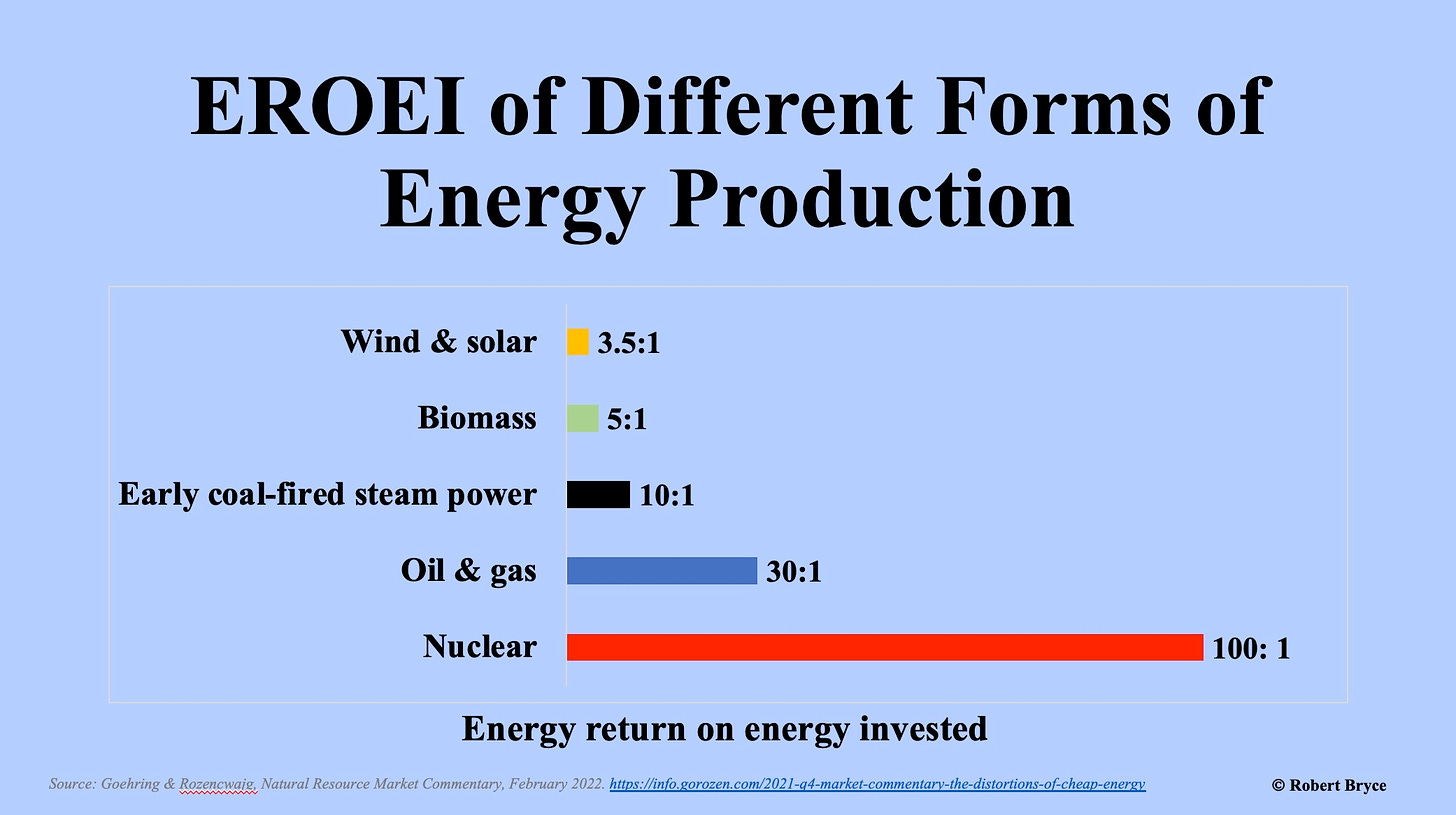Following on Energy: "The Power Of Power Density".
From Robert Bryce's substack (energy, power innovation, politics), August 20:
A look at EROEI and material intensity per megawatt-hour
My August 13 article, “The Power Of Power Density,” is the second most popular article I have published here on Substack. The article struck a chord. Why? I suspect that lots of people want to have a better grasp of the physics that rule our energy and power systems.
As I explained last week, power density is perhaps the most important — and yet least understood — metric in physics. Indeed, many people who work in the energy and power sectors don’t understand it. In addition, the Iron Law of Power Density — which says the lower the power density, the greater the resource intensity — helps us understand why wind and solar energy cannot, will not, ever be able to power our society. In addition to their incurable intermittency and dependence on the weather, they require too much land and other resources.
Given the favorable response to last week’s posting, I am going to expand on it here. First, I’ll explore another key metric: energy return on energy invested or EROEI. Like power density, EROEI is a critical tool for understanding why our energy and power systems continue to be dominated by hydrocarbons and why we should be focusing our efforts on natural gas and nuclear energy.
In addition, I am publishing two new graphics. The first is an updated resource intensity graphic that looks at electricity generation capacity, measured in kilograms per megawatt. The second graphic looks at the resource intensity of electricity production by measuring it in kilograms per megawatt-hour of energy produced. Spoiler alert: the new graphic shows even more clearly why offshore wind is such a loser.
Before diving into EROEI, a quick refresher: power density is a measure of energy flow that can be harnessed from a given area, volume, or mass. Thus, power density can be measured in watts per square meter, per liter, or per kilogram. I largely focus on areal power density — measured in watts per square meter — because it is the key to understanding land use and why the paltry power density of wind and solar has led to land-use conflicts from Erie County, Ohio to the Golan Heights. If you want to dive into volumetric and gravimetric power density — measured in watts per liter or watts per kilogram, which are essential to understanding motors and engines — I suggest you read my fifth book, Smaller Faster Lighter Denser Cheaper: How Innovation Keeps Proving the Catastrophists Wrong.)
Now, EROEI. The importance of this metric is obvious: we want maximum return on the cash we put in the bank or the stock market. We also want maximum return on the energy we spend. Just as it takes money to make money, producing energy always requires using energy. Whether it’s chopping wood for the fireplace, the diesel fuel needed to run the generators that power a drilling rig, or the electricity needed to spin the centrifuges that enrich the uranium fuel that we put in our nuclear reactors, we have to spend energy to get energy. And the less we have to spend, the better.
As can be seen in the graphic above, wind and solar have a woefully low EROEI of 3.5:1, that is, for every unit of energy put into wind and solar, you get 3.5 units of energy out. Meanwhile, nuclear has an EROEI of 100 to 1....
....MUCH MORE
